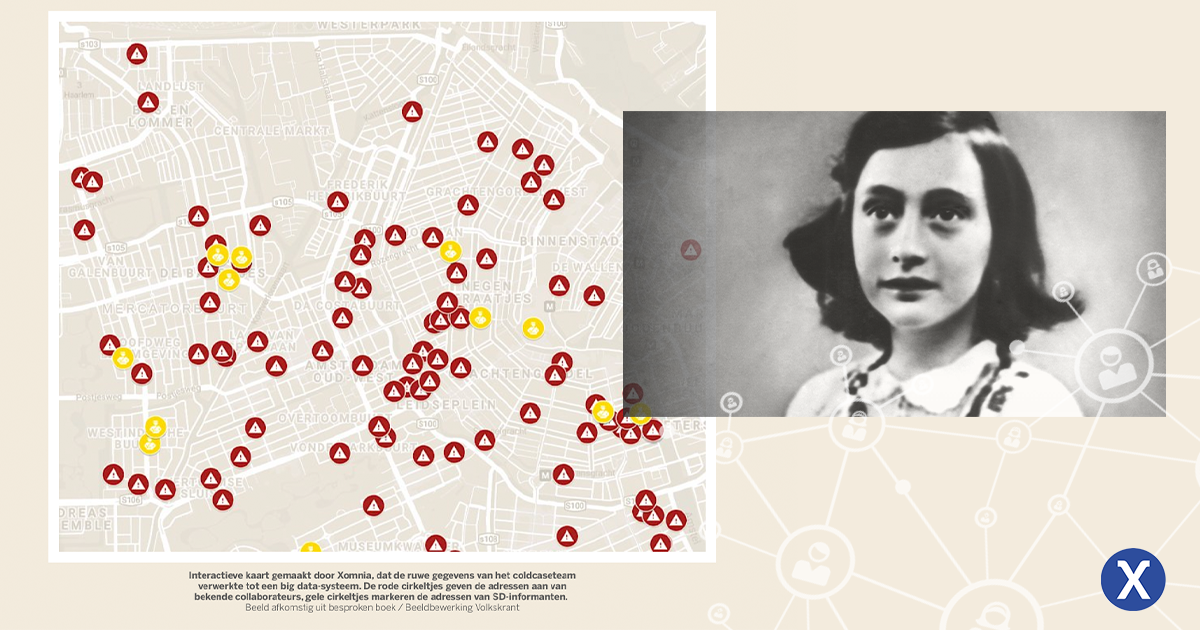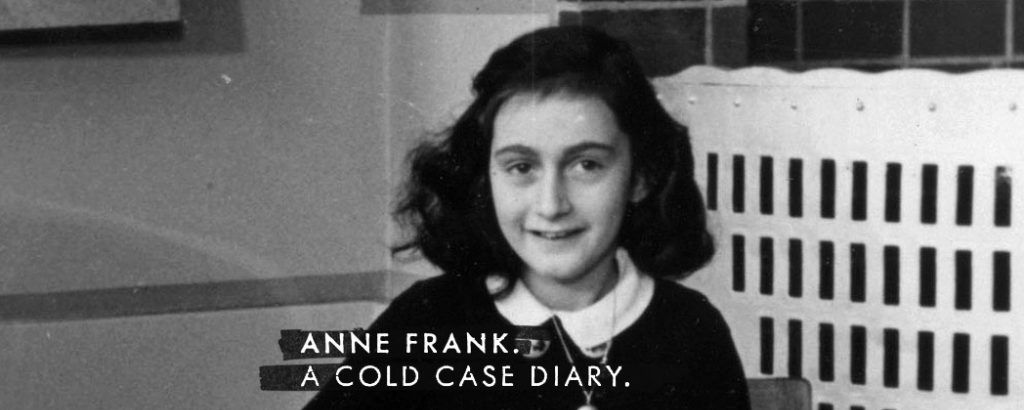Xomnia collaborated with an expert team investigating the identity of who betrayed the Van Pels family, the Frank family, and Fritz Pfeffer in 1944. The team of researchers, led by retired FBI agent Vince Pankoke, reached out to Xomnia to utilize our data and AI expertise in the investigation.
Starting 2017 and over the span of around a year and a half, two of Xomnia’s data scientists, Marius Helf and Robbert van Hintum, created the data infrastructure that helped the researchers make sense of their data.
The initial outcome of the investigation and the research process that utilized AI and lasted for over 5 years is documented in the book The Betrayal of Anne Frank by Rosemary Sullivan, which was published in January 2022.
“Xomnia laid the foundation for the AI application that Microsoft delivered specifically for the investigation. That foundation was built by two terrific guys from Xomnia, Marius Helf and Robbert van Hintum” – Pieter van Twisk
Challenge
Following WWII, Otto Frank, who was the only member of the Frank family to survive, pushed for an investigation into who had given the Nazi’s information that led to their discovery. There was no conclusive evidence, and the case remained unsolved. Since then, there have been dozens of theories about who betrayed Anne Frank and her family, but never has modern technology been used to investigate the events.
Around Vince Pankoke a team of forensic investigators was formed who used cold case techniques supported by artificial intelligence to establish the identity of the informant. The team approached Xomnia to figure out how AI can help them make use of all the thousands of data points that they could access from the archives of the Dutch police, the City of Amsterdam and various other international institutions.
Solution
Marius Helf and Robbert van Hintum, data scientists in our team at the time, worked as consultants for the project. They built the data store where the research team could collect all the information that they found in a structured, searchable and processable way. Next, our data scientists created visualizations in the form of interactive maps of Amsterdam, plotting all the information that they have on them.
“The final product was able to relate events and persons, which allowed, for instance, to search who was in close proximity to a specific location on a specific date,” explained Marius. “This way, you can find relations very quickly in the data.”
“I do not think that we could have done the whole investigation without at least the infrastructure that Xomnia built, which was incredibly helpful,” said journalist Pieter van Twisk who led the research team.
“Thousands of names, addresses, street names, telephone numbers, dates of birth and death… etc. went into the data store infrastructure, which allowed us to register the relation between them”, he added.
Later on in 2019, the project was passed to Microsoft and one of its subsidiaries in Spain. They built on the data store by scanning thousands of documents and making them searchable using Optical Character Recognition (OCR), and translating them to English so that all members of the research team could work with the data.

Impact
To read more about the initial outcome of the investigation and the technology behind it, check the book The Betrayal of Anne Frank by Rosemary Sullivan, which comes out today and can be purchased by clicking here.
“The whole team was fantastic, and it was a privilege to work with them. Marius and Robbert always went above and beyond the call of duty and always stood by our side and if there was a problem or if we needed a backup or an adjustment, they were always there for us. Very happy with them.”– Pieter van Twisk


